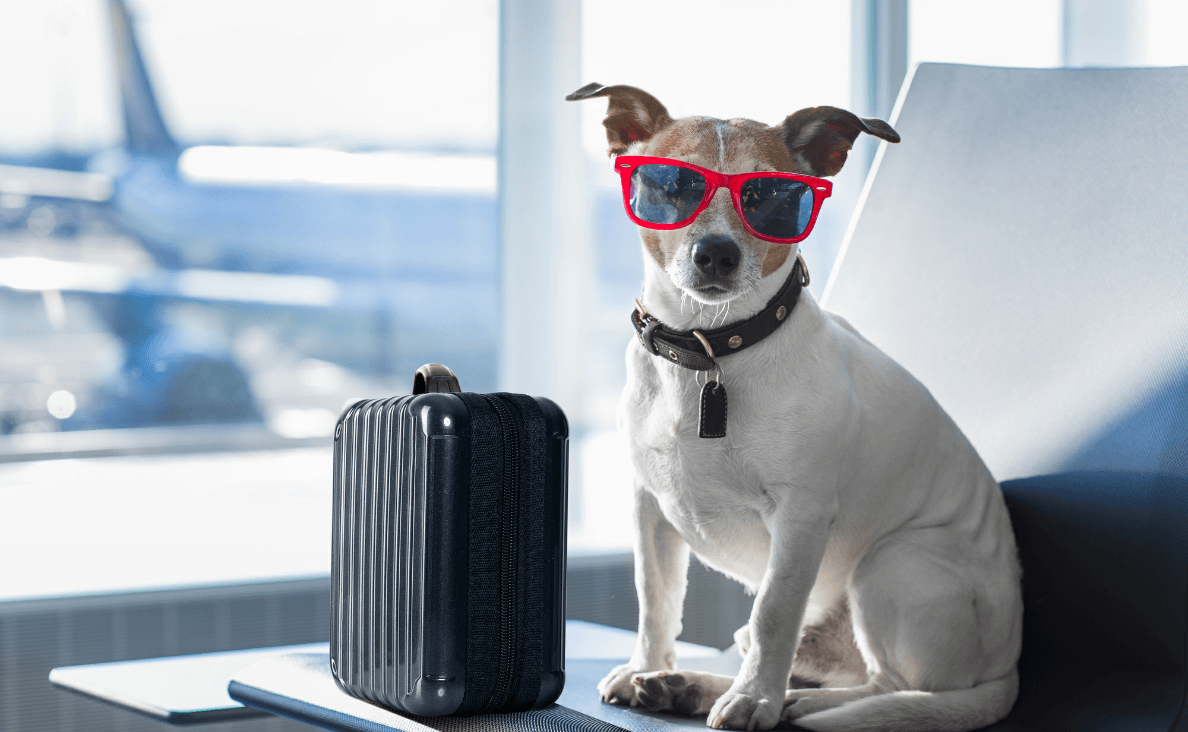
Flying with your dog used to be fairly straightforward – get a travel crate, don’t feed your dog too much food, administer a sedative from your vet, check your dog in his or her crate with your luggage, cross your fingers and hope your dog makes it OK.
Today, the process is a bit more complicated. For one thing, the old approach was challenging. And two, it was frequently unsafe. While more people are taking their fur babies with them when they fly, there have been a string of cases involving tragedy and confusion while transporting animals. Some professionals advocate taking your dog with you everywhere you go, while others urge caution.
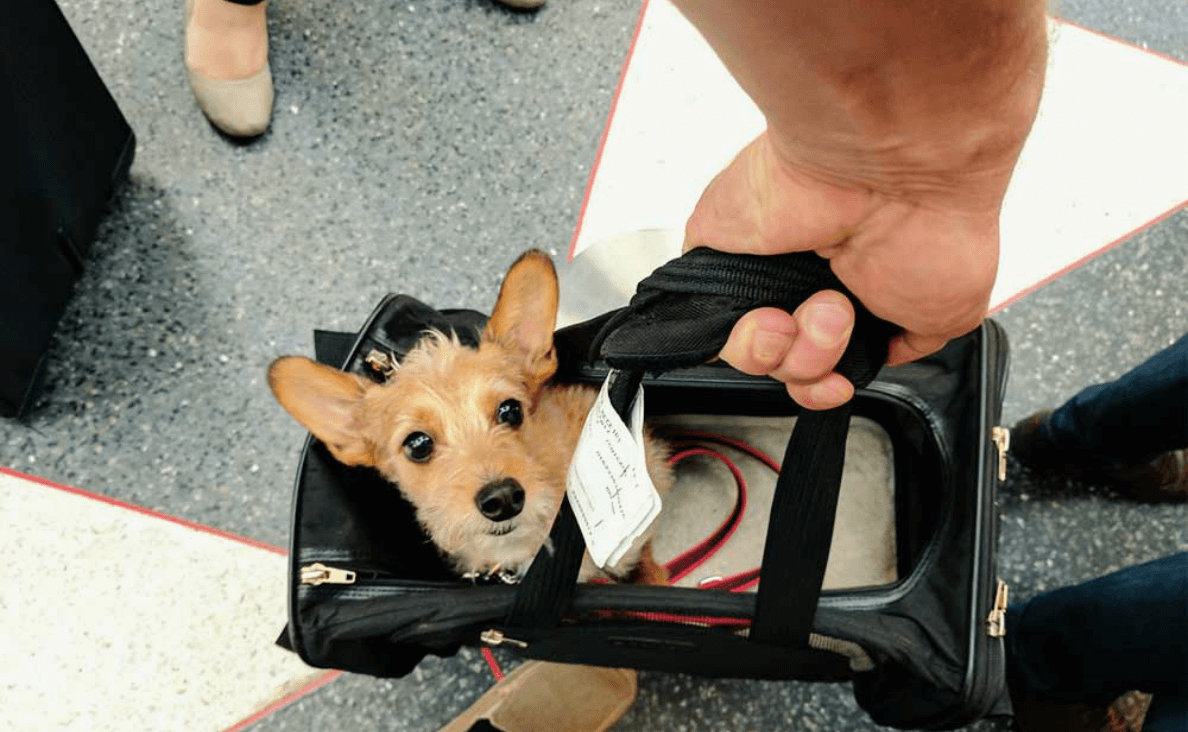
Is It Safe to Fly Your Dog on an Airplane?
Many veterinarians say flying with dogs and other pet animals should be a last resort. It is less stressful on your dog to board him or her in a quality kennel than to try to fly them on an airline. About 25 animals die while being transported on a U.S. plane each year, at a rate of .5 per 10,000 animals transported. Is it especially risky to transport your dog in a cargo hold. While most animals flown in the cargo area of a plane are fine, some animals die, or are injured, each year. Excessively hot or cold temperatures, poor ventilation and rough handling are often to blame.
Other ways animals could be killed or injured during flight include:
- Freezing to death when climate-control systems fail
- Heat prostration on the tarmac during lengthy delays
- Hurting themselves while trying to escape from their carriers
- Being hurt or killed when a heavy item falls on them during extreme turbulence
If you must fly, it is safer to bring your dog with you in the cabin as long as your dog is small enough that his or her carrier will fit under the seat. For most airlines, a dog must be 15 lbs or less to fit. Unfortunately, that leaves a lot of dogs that are too large to be transported in the plane’s cabin.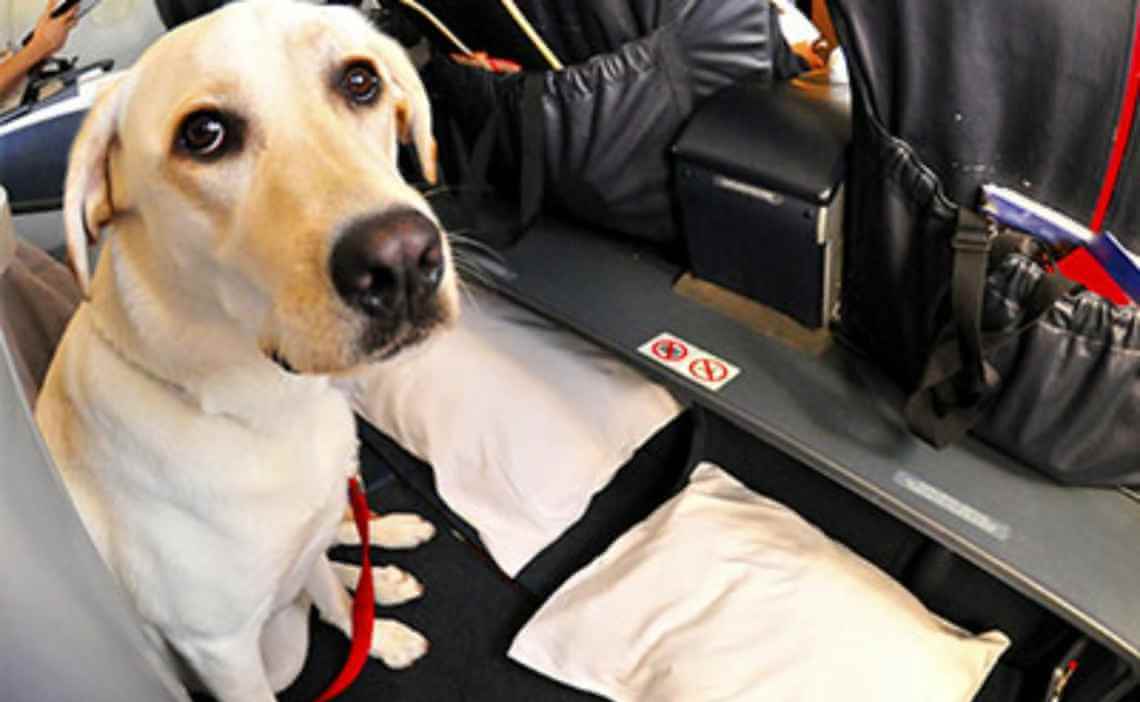
Expert Tips and Suggestions
Flying your dog isn’t always dangerous. Some people do it regularly. There are many necessary reasons to fly your dog. Here are some expert tips and suggestions for how to do it safely.
-
Breed restrictions
Many airlines won’t allow brachycephalic breeds to fly, due to a high risk of breathing complications Brachycephalic breeds are breeds with a flatter face, such as:
- Affenpinscher
- American Bully
- American Put Bull Terrier (Pit Bull)
- American Staffordshire Terrier
- Belgian Malinois
- Boston Terrier
- Boxer
- Brussels Griffon
- Bulldog
- Cavalier King Charles Spaniel
- Chow Chow
- Dogue de Bordeaux
- English Toy Spaniel
- French Bulldog
- Japanese Chin
- Lhasa Apso
- Mastiff (all types)
- Neapolitan Mastiff
- Pekingese
- Pug
- Shar Pei/Chinese Shar Pei
- Shih Tzu
- Staffordshire Bull Terrier
- Tibetan Spaniel.
This includes mixed breed dogs where the dominant breed is on the above list. To determine if your dog’s breed is allowed, check the airline’s pet policy before you book your ticket.
It probably is not a good idea for high-stress or dogs with high anxiety levels to fly. It’s just not worth the stress for your poor pup. Dogs that are highly vocal may not be a good choice either, especially if they will be riding in the cabin.
If you think a flight might be traumatic for your dog, do him a favor and keep all four paws on the ground. A reputable, high-quality kennel is a better choice for high-strung, nervous dogs or dogs that bark a lot.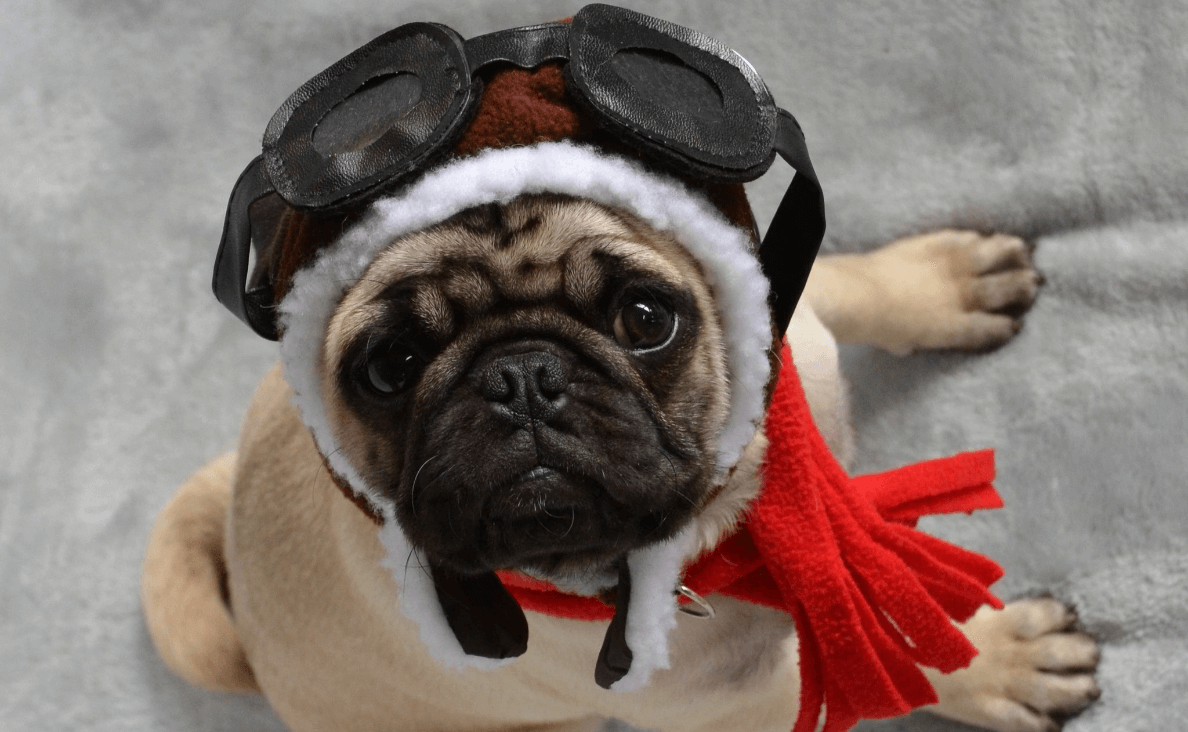
-
Age restrictions
Most airlines require puppies to be a certain age before flying. Minimum age requirements can vary depending on whether the puppy is flying into the U.S. from a different country or is under a certain weight restriction. Make sure your puppy has been weaned at least 5 days before flying.
-
Health restrictions
Dogs that are overweight, have respiratory issues or other pre-existing health conditions are more likely to have problems during air travel. Female dogs that are more than two-thirds of the way through their pregnancy won’t be able to travel.
-
Cost
Expect to pay a fee when you fly with your dog. Current standard fees range from $75 to $200 each way and can go up to several hundred dollars for dogs that must be transported on cargo planes. And no, you can’t buy a seat for your dog.
-
Flights
If at all possible, choose a direct flight. Submitting your dog to longer flights plus multiple encounters with baggage handling can easily cause trauma to your dog.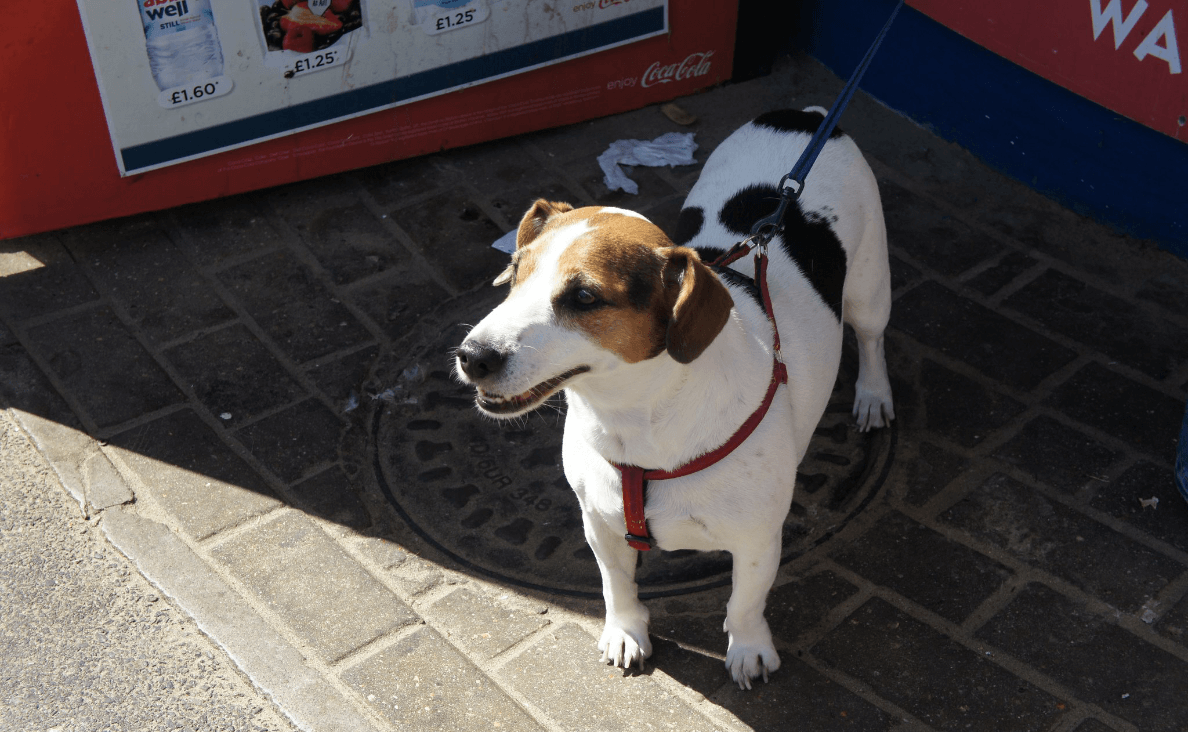
-
Weather
Consider the weather. In winter, fly during the warmest part of the day. In summer, fly early or late to avoid the midday heat. Do not fly to Las Vegas, Palm Springs, Phoenix or Tucson during the summer months.
-
Holidays
Avoid flying during the holidays when airlines and airports are busier than usual.
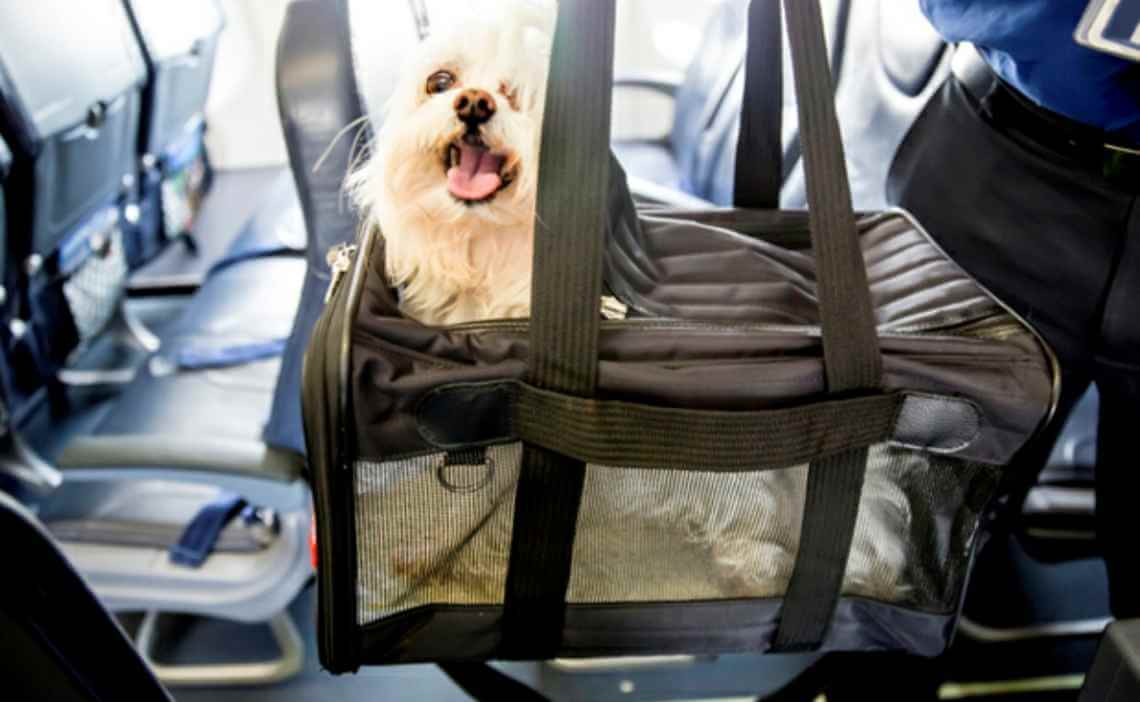
How to Prepare to Fly Your Dog on a Plane
Here are the steps you should to take before flying with your dog.
-
Research your options
Research and compare the policies of various airlines to determine the right airline for you and your dog.
-
Get in touch with the airline
Most airlines won’t allow you to book a flight with your dog online. You will need to call the airline to determine if the plane has space for you and your dog (there is usually a limited number of spaces for dogs). Make sure to make a reservation for you and your dog at the same time.
-
Take your dog in for a health check
Your dog will need a health certificate stating he or she is healthy enough to fly and is up-to-date on immunizations. The certificate is only good for 30 days, so you may need to have your dog seen again before you head home from your destination if you’re staying longer than 30 days. Ask your veterinarian about what to feed your dog (if anything at all) on your day of travel to reduce the chance your dog will have an upset stomach.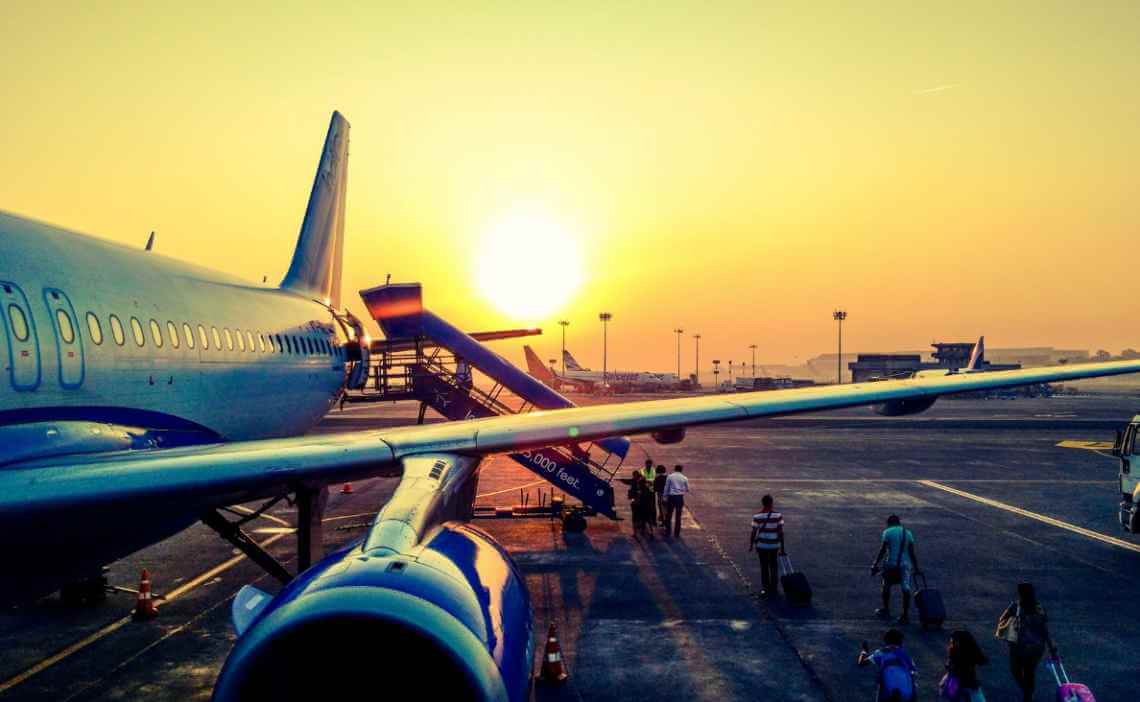
-
Consider hiring a pet travel expert
If you’re traveling internationally, you will need a good understanding of your destination country’s dog importation laws. Many countries have painfully complicated processes; it might be a good idea to hire an agency in that country to handle the logistical details for you. Here is a link to the International Pet and Animal Transportation Association.
- Make sure you have an airline-approved carrier or crate
If your dog is small enough to fit in a carrier that fits under the seat in front of you, you can most likely bring your dog onboard with you. Otherwise, your dog will usually be required to fly in the cargo hold. Regardless of whether your dog is flying in the cabin or cargo hold, he or she needs to be able to stand up and move around in its carrier or crate. Here’s what to look for:
- The crate or carrier should be durable
- It should have strong handle grips on top and on at least one side
- The bottom should be leak-proof and padded with absorbent material
- It should have ventilation on opposite sides
- It should have a sign with “live animal” and arrows showing which way is upright, and also be clearly labeled with the owner’s name, address and destination contact information
For more information on dog carriers and crates, check with your airline’s pet policies.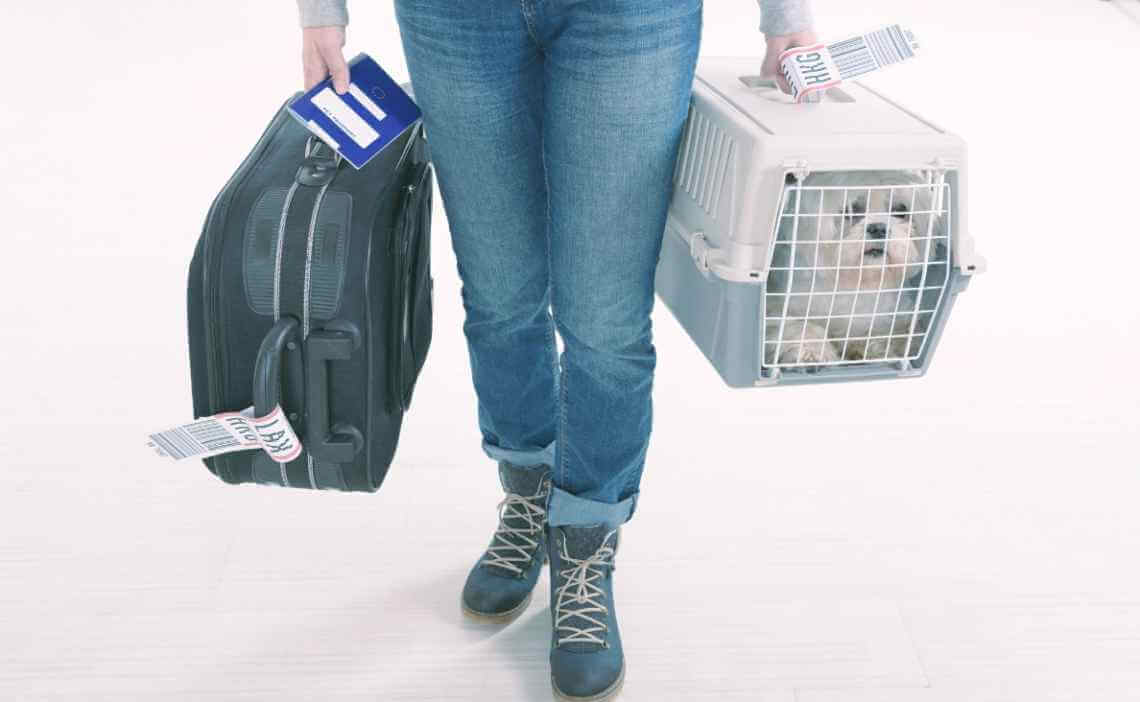
-
Let your dog get comfortable in the crate or carrier
Your dog will be spending hours inside a cramped carrier. Before you subject her to the flight, familiarize her with the carrier she will be flying in. As soon as you have your flight booked, encourage your pooch into her carrier every day. It’s overwhelming for your dog to be confined to a new carrier, plus a scary plane, plus new smells and sounds, plus being jostled around. If your dog is at least comfortable in her carrier, she will have a better chance of being able to relax during the flight.
-
Desensitize your dog to noise
Make sure your dog is desensitized to loud noises and crowds. There are some exercises to help your dog be calm in a crowd. You can also play sounds of airplanes taking off and landing in the house or loud noises over a speaker system to get the dog used to loud noises.
-
Don’t sedate your dog
Sedatives administered to dogs during air travel can increase the risk of respiratory or heart issues caused by changing altitudes and atmospheric pressures. Sedatives may also interfere with your dog’s balance or equilibrium while being transported in a crate or carrier.
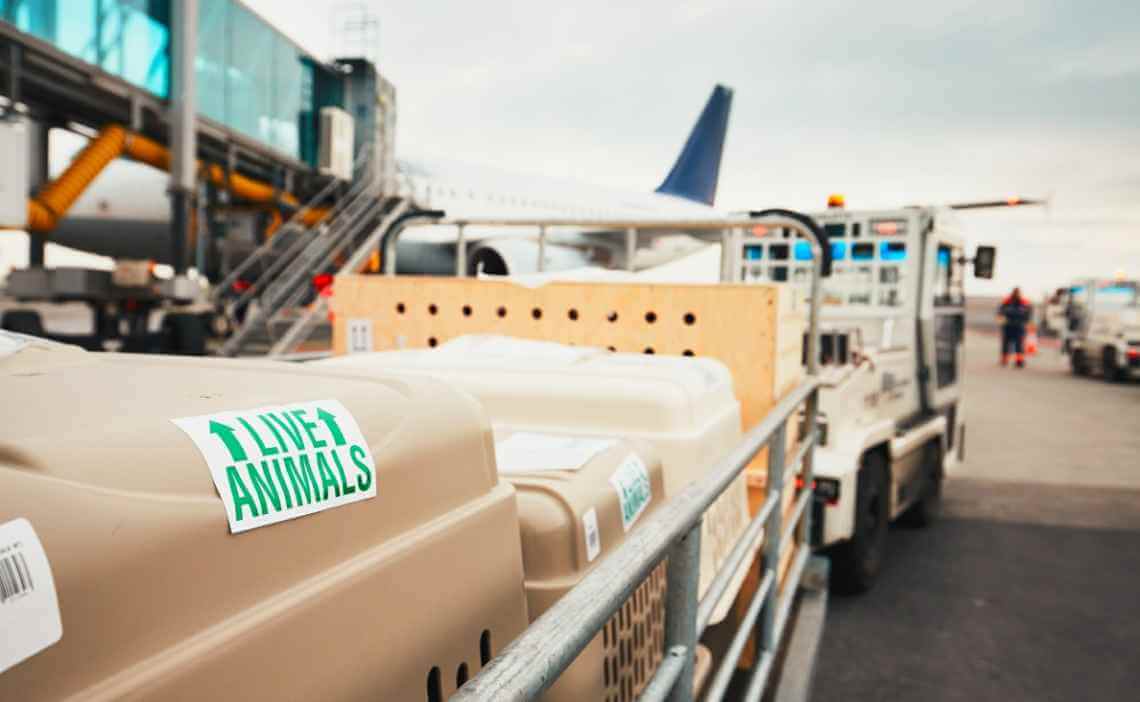
-
Prepare the carrier or crate for flight
Tape a current photo of your dog to the crate or carrier so you can identify your dog should the airline misplace your dog. Of course, pet ID tags and having your dog implanted with a microchip can improve your chances of getting your dog back if he or she becomes lost. Also attach a bag of food so airline personnel can feed your dog if your flight is delayed.
No matter how well trained your dog is, accidents can happen, especially in high-stress environments like an airplane flight. Line your dog’s carrier with a pet carrier liner. Pet carrier insert pads will wick away moisture to keep your pup comfortable.
-
What to bring for your dog
Make sure you have enough food, toys and treats to get your pup through a few days. Be sure to bring a non-spill water carrier and your dog’s favorite chew toy to keep your fur buddy occupied during the flight. But don’t be alarmed if your dog doesn’t touch his favorite chewy. This is usually due to travel anxiety.
-
Exercise your dog
Exercise your dog as best you can on the day of travel. Try to take your dog for a walk as close to boarding time as possible. Some airports have dog-friendly facilities or you may have to find a park close by on your way to the airport. Pet Friendly Travel offers a search engine for finding pet relief areas at airports in the U.S.
-
Check in as late as possible
Check in as late as possible (without missing your flight, of course) to give your dog a shorter wait time. Don’t bring your dog to check in more than four hours before your flight.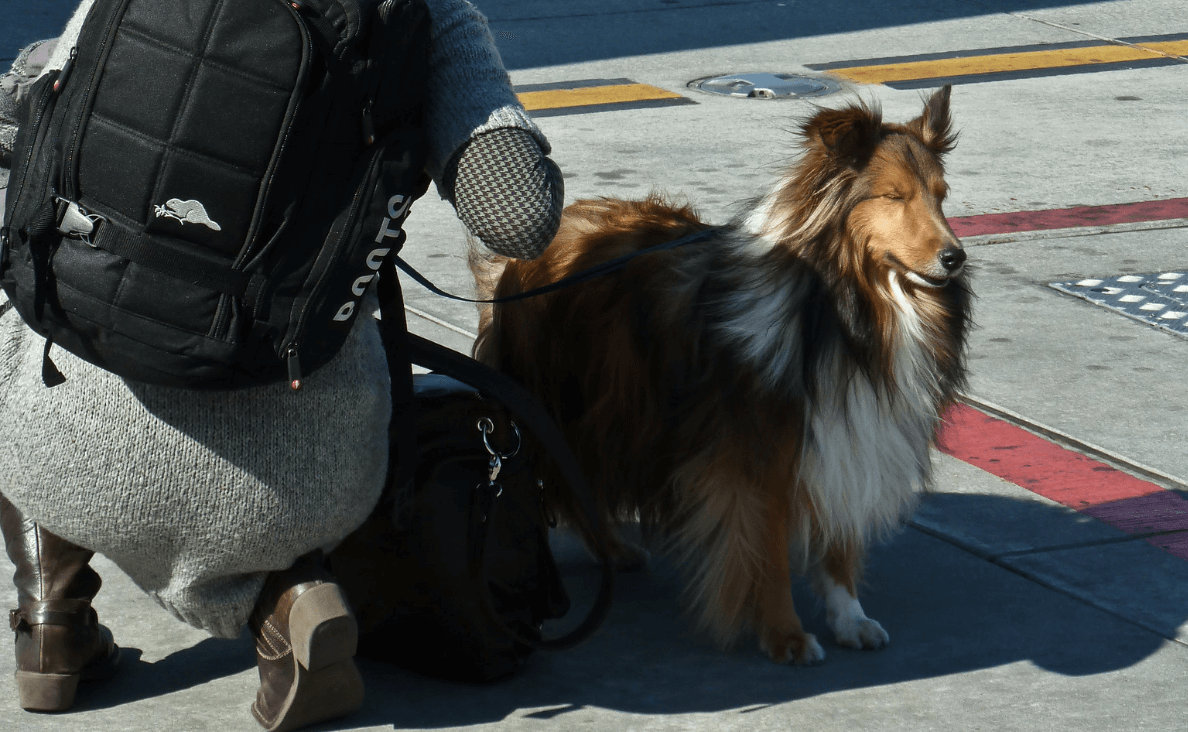
-
Stay calm and relaxed
Dogs look to us for their cues. If you’re stressed and nervous, your dog will be too. But if you’re calm and confident, your attitude will rub off on your pooch. Being prepared will help smooth the process and hopefully your dog will enjoy a safe ride all the way to your destination.
-
Sit near the front
Try to reserve a seat near the front of the plane if your dog is flying in the cargo hold, so you can get off the plane and retrieve your dog as quickly as possible.
-
Once you arrive
As soon as you arrive at your destination airport, get your dog outside so she can relieve herself. If you’re traveling with a companion, have one person take care of the dog while the other one collects the luggage.
-
Long delay
What happens to your dog if there is a long delay? Unfortunately, a long flight delay can occur. Check with your airline to find out what their policy is should a long delay be necessary.
In order to comply with the Animal Welfare Act, a comfort stop is required for all dogs who are booked to travel more than 24 hours. Comfort stops are at designated kennels and you will be charged a fee should your dog need a comfort stop. In many cases, you can pay for an optional comfort stop when you book your flight.
Here’s what happens at a comfort stop:
- Your dog will be checked to make sure they aren’t sick or stressed
- They will have an opportunity to relieve themselves
- Their crate will be cleaned. Any soiled bedding will be thrown away.
- Your dog’s water will be refilled and they will be fed depending on your travel schedule.
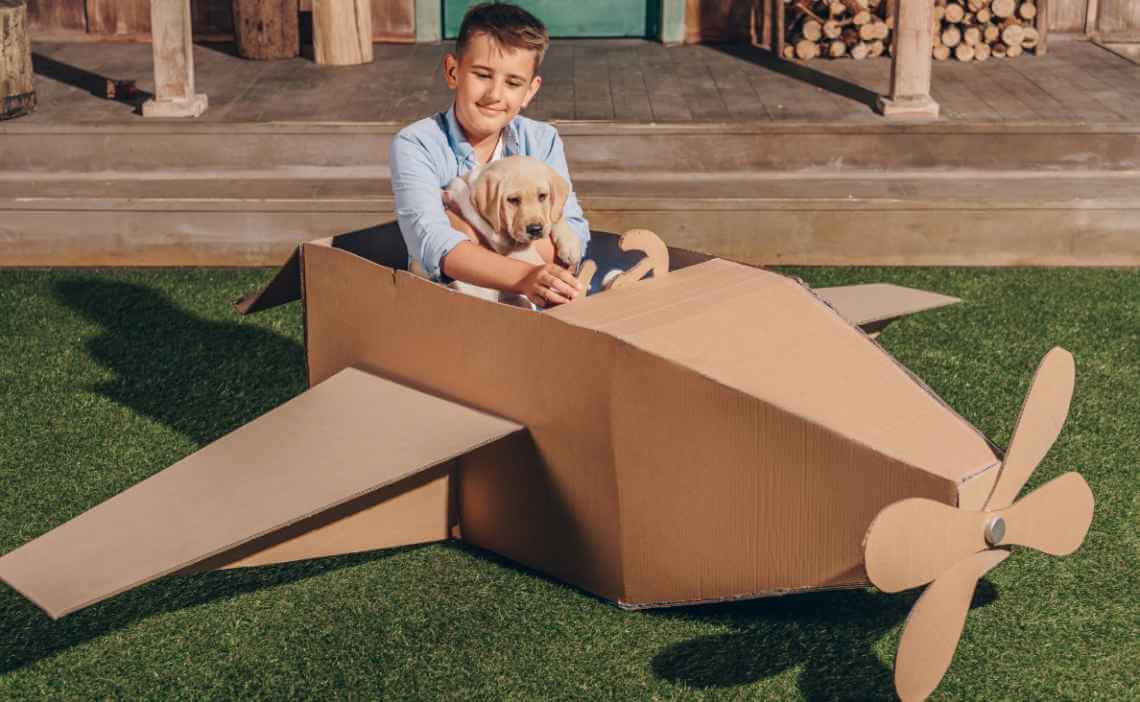
When it comes to flying with a dog, every singe dog is different. Air travel is different for every breed, dog temperament and owner. Knowing how to prepare for your next trip and what to look for in an airline is key to having a safe and successful journey.
When flying with a dog, you can’t be overly prepared.
What do you think about flying with a dog? Have you ever flown with your pooch? What tips would you add?

 10 Ways to Keep Your Dog Safe During the Fourth of July
10 Ways to Keep Your Dog Safe During the Fourth of July Can Dogs Eat Hot Sauce and Other Spicy Foods?
Can Dogs Eat Hot Sauce and Other Spicy Foods? 8 Outstanding Health Benefits of Dog Ownership
8 Outstanding Health Benefits of Dog Ownership How to Stop Dog Aggression Toward Other Dogs
How to Stop Dog Aggression Toward Other Dogs 7 Indispensable Tips for Hiking with Your Dog in Winter
7 Indispensable Tips for Hiking with Your Dog in Winter






Leave a Reply